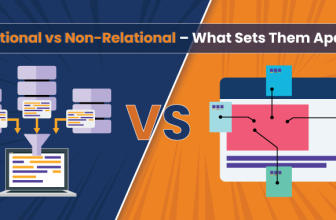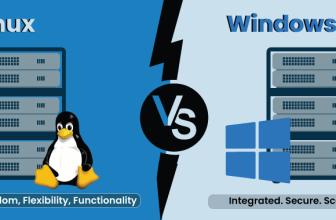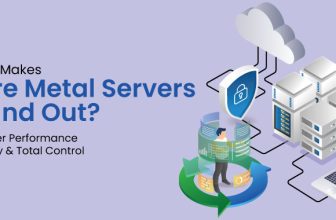
As of 2025, innovations in the field of Machine as well as Deep Learning (ML and DL, respectively) continue and grow to create an environment in technologies and artificial intelligence (AI). Machine Learning is a branch of AI that enables a system to improve over time, through learning data, without programming. It contains a wide range of algorithms to extract patterns and generate forecasts based on input data. Conversely, Deep Learning is a more contemporary form of ML and is rooted in artificial multiple-layered neural networks, which match intricate patterns within vast bodies of data. DL is preferable in cases involving the use of images and speech recognition because classical ML methods may prove inadequate. It is worth knowing these differences within an aesthetic and business-developer setting, who may be interested in capitalizing on AI. This blog will talk about the definitions, differences, advantages, and applications of ML and DL, providing a complete picture of their existence in the technical world.
Understanding the Differences Between AI, Machine Learning, and Deep Learning
The key variations among Machine Learning (ML), Deep Learning (DL), and Artificial Intelligence (AI) can be explained based on their scope and functionality. AI is a general branch that includes all smart systems. ML is a subdivision of AI that is concerned with learning algorithms. Deep Learning, on the other hand, is a special category of ML that involves the use of neural networks (multiple layers) to represent complicated patterns, especially in huge volumes of data, which increases performance in tasks such as image recognition and speech recognition.
What is Machine Learning?
A branch of artificial intelligence, Machine Learning enables the systems to improve with time based on the data that is used, and even though it is not explicitly programmed, they improve. The ML algorithms can do that based on the patterns that can be identified in the data, which can make some predictions or decisions using new data.
Supervised Learning: A model is trained based on labelled data in which the desired output is known. An example would be predicting the prices of houses dependent on features such as size and location.
Unsupervised Learning: A learning method whereby one trains a model using unlabeled data and, it can group and find patterns. Customer segmentation according to purchasing behaviour is an example.
Reinforcement Learning: The training of decision-making involves the use of trial-and-error methods, where an agent will be rewarded or penalized depending on its decisions. Example: This is typical in the world of robotics and game playing.
The benefits of Machine Learning have extended to numerous fields of endeavor, including financial or healthcare companies, and have allowed companies to make data-driven business decisions and have processes automated.
What is Deep Learning?
Deep Learning is the improved form of Machine Learning, which processes artificial neural networks to identify complex patterns in massive sets of data. The networks resemble the human brain, as these networks are very complex with multiple levels of interconnected nodes (neurons) executing operations on the data in a hierarchical manner. DL excels in image and speech recognition, natural language processing, and other processes, and in many cases can outperform traditional ML approaches when given large amounts of unstructured data. The ability to automatically learn features of raw data, particularly in cases where the traditional machine learning (ML) methods are ineffective, also defines Deep Learning. As an example, in image recognition, deep learning (DL) models can be trained to learn features to recognize without explicitly extracting features, e.g., edges, shapes, and textures.
How Deep Learning Works?
Deep Learning is implemented by a transfer of information through several layers of neurons within a neural network. Each of these layers processes the data and retrieves more general features. The training process is achieved by optimizing connection weights between the neurons on the basis of the error of the model output against the actual results. This is usually performed by following an algorithm referred to as backpropagation that will optimize the performance of the model with time. The structure of a deep neural network may differ widely according to the factor of application. As an example, Convolutional Neural Networks (CNNs) usually work on images, whereas Recurrent Neural Networks (RNNs) are used in sequence (time series, natural language).
To select the right approach to a specific problem, one has to understand the differences between Machine Learning and Deep Learning.
Some of the key differences are as follows:
Complexity: ML algorithms are simple and not computationally intensive as compared to DL, which consists of deep neural nets with numerous layers. This complexity allows DL to capture the patterns in data that are complex.
Data Requirements: DL typically needs more data to be able to train, whereas ML can work with smaller amounts of data and is effective. This is because the DL models have many parameters that must be optimized, and therefore, they need more amounts of training data to avoid overfitting.
Feature Engineering: In ML, feature engineering is primarily manual, and domain expertise is required to select features, which an expert can provide. In contrast, DL learns features of raw data automatically, reduces manual intervention, and allows more complex representations.
Interpretability: The ML models are typically more interpretable, which implies that it is easier to understand the decision-making process. The DL models, however, might be periodically considered a black box, and this fact might render it challenging to interpret. This can be a drawback in aspects of occupying applications, whereby an understanding of the decision-making process is valuable, as in the case of healthcare.
The gap between ML and Deep Learning is great since it happens that ML can be significantly easier to apply to small projects, and DL is applied to big applications where high precision is required.
ML vs DL: Advantages and Disadvantages
| Machine Learning | Deep Learning | |
|---|---|---|
| Advantages |
|
|
| Disadvantages |
|
|
Types of Machine Learning
- Supervised Learning: Algorithms, such as linear regression, decision tree, and support vector machine, can be leveraged to predict an output, given labelled data.
- Unsupervised Learning: They use algorithms such as k-means clustering and hierarchical clustering to determine the patterns in unlabelled data.
- Reinforcement Learning: The basis of this is the training of agents based on trial-and-error algorithms such as Q-learning and deep Q-networks.
Types of Deep Learning
- Convolutional Neural Networks (CNNs): CNNs are mostly used in image-based tasks, wherein they are used to capture spatial hierarchies of images.
- Recurrent Neural Networks (RNNs): Recurrent neural networks are used when the data has some sequencing, e.g., language modelling, time series prediction.
- Generative Adversarial Networks (GANs): Generative Adversarial Networks are applied to generate new data samples consisting of two networks; one being the generator and the other being the discriminator.
Machine Learning vs Deep Learning: Use Cases
| Machine Learning | Deep Learning |
|---|---|
|
|
Conclusion:
To conclude, although Machine Learning and Deep Learning are parts and parcels of the development of artificial intelligence, they are of varied uses and applicable to varied forms of tasks. It is vital to comprehend differences, benefits, and uses because every person interested in utilizing the power of AI in 2025 and the years to come should be aware of them. The distinction between AI, Deep Learning, and Machine Learning is essential when it comes to making a knowledgeable decision regarding the technology adoption. The combination of ML and DL will no doubt result in even more innovative solutions across different industries as the technology continues to evolve.
Frequently Asked Questions (FAQ's)
How are AI, ML, and DL different?
The diverse intelligent systems can be merged into one term called Artificial Intelligence (AI). One area of AI is called Machine Learning and refers to learning algorithms. Another subgroup of ML is Deep Learning; it performs the modeling of complex patterns in big data with the help of neural networks.
How is Machine Learning related to AI?
Artificial Intelligence would be incomplete without Machine Learning. It allows systems to make use of data to learn and enhance their performance with time without requiring explicit programming. In principle, machine learning (ML) offers the methods and tools via which AI systems have the capacity to make data-driven assumptions and conclusions.
What are the computational needs for ML vs. DL?
Machine Learning typically takes fewer computing resources than Deep Learning. ML is frequently implemented on traditional CPUs, whereas DL usually requires having powerful GPUs to perform the huge operations required to train the deep neural networks experimentally, particularly using gigantic quantities of data.
Which applications use ML and DL?
Applications of Machine Learning are widespread, and the most prominent ones are in fraud detection, customer segmentation, and predictive maintenance. In comparison, Deep Learning is especially suitable in object recognition, natural language, and medical diagnosis, where the system can make use of large amounts of unstructured data.
Do data analysts use machine learning?
Yes, Machine Learning often corresponds to data analysts trying to bring insights out of data. They can apply the use of ML algorithms to find patterns, make predictions, and guide the decision-making model to strengthen their capabilities in providing actionable results that accelerate their business strategies.






